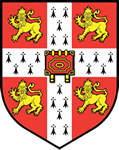Part 4: Morphological frameworks
Chapter 14: Classical morphemics: Assumptions, extensions and alternatives
Chapter 15: Natural Morphology
Chapter 16: Distributed Morphology
Chapter 17: Construction Morphology
Chapter 18: Paradigm Function Morphology
Chapter 19: Network Morphology
This section offers a sketch of major morphological frameworks, each of which is discussed in relation to the theoretical issues and principles outlined in the previous parts. Part 4 begins with an ‘historical’ chapter on classical morphemics and its traditional alternatives; this chapter spans a range conceptual frameworks from Bloomfield to Hockett to Robins, many of whose assumptions have been either challenged or refined in subsequent frameworks. Those included for discussion are Natural Morphology (Dressler et al. 1987), Distributed Morphology (Halle & Marantz 1993), Construction Morphology (Booij 2010), Paradigm Function Morphology (Stump 2001), and Network Morphology (Brown & Hippisley 2012).
Jump to:
Part 1: Foundations of morphological theory
Part 2: Issues in morphological theory
Part 3: Morphological principles
Part 5: The role of morphology in theories of phonology and syntax
Part 6: Domains for the evaluation of morphological theories
Appendix: Sources and resources for morphological research

